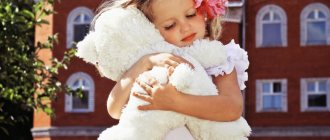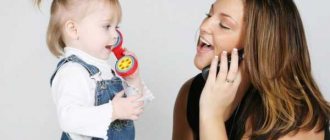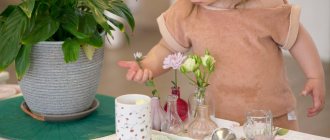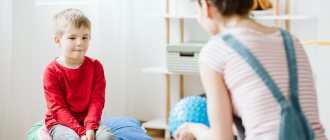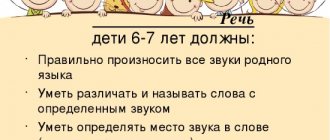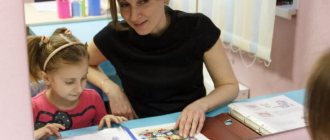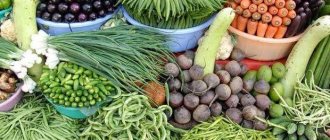Lexical topic “Transport”
Lexical topic “Transport” (02/05/18-02/09/18)
senior group No. 10
| Tasks | Integrated educational areas | Mark on the solution of assigned tasks |
| 1. Expansion, generalization and systematization of children’s knowledge about transport, types of transport. Creating conditions for the development of cognitive and creative abilities of preschool children. Introducing the rules of behavior that is safe for humans and the natural world around them, consolidating children’s knowledge of road safety rules as a pedestrian and a passenger in a vehicle. 2. Teach children to draw wavy lines, short curls and blades of grass in a continuous, smooth movement. Practice drawing thin smooth lines with the end of the brush. Strengthen the ability to evenly alternate berries and leaves on a strip. Develop a sense of color, rhythm, composition; the ability to convey the color of Khokhloma painting. Teach children to portray dogs and puppies, conveying their characteristic features (oval body, round head, elongated muzzle, short thick legs and tail). 3. Strengthen sculpting techniques: rolling between the palms, connecting parts by pressing and smoothing the bonding points. | P SK HE HE |
Educational activities in special moments within the framework of the topic being studied
UGG complex:
see card index February 1 week
Gymnastics complex after sleep:
see card index February 2nd week
Physical education minute:
"Truck".
The truck is carrying sand. (They walk in a circle, pretending to turn the steering wheel)
The people are surprised: (they stop, turn their faces in a circle,
they throw up their hands and make a surprised face)
“This is a miracle - miracles, (tilt head left and right twice)
There is sand in it to the skies! (stretch on tiptoes, raising hands up)
"Aircraft".
The planes hummed (rotating in front of the chest with arms bent at the elbows)
The planes flew (arms to the sides, alternately tilting to the sides)
They sat quietly in the clearing (hands to knees)
And they flew again. (arms to the sides, bends to the sides)
Finger gymnastics:
“Transport”
Purpose: development of fine motor skills, coordination of finger movements.
Cars are walking along the highway, (Turn an imaginary steering wheel.)
Tires are rolling on the asphalt. (Elbows are pressed to the body, palms move parallel to each other.)
Don't run along the road, (They shook a finger.)
I'll tell you: "Beep." (The hand is clenched into a fist, the thumb is straightened - “signal.”) Finger games on the topic: “Transport”
Bus, trolleybus, car, tram -
Don't forget about them on the street. (connecting fingers in turn with the thumb)
In the seas - ships, icebreakers, ships, (the same with the fingers of the other hand)
They very rarely come here.
"Ship".
A boat is sailing along the river,
He swims from afar. (wave-like movements with hands)
.
There are four on the boat,
A very brave sailor. (show 4 fingers on each hand)
.
They have ears on the top of their heads, (place both palms towards the top of the head)
.
They have long tails (fold your fingers into a pinch and spread them apart).
And only cats are scary to them,
only cats and kittens (“scratching movements with fingers”).
SCTD:
Topic:
Perception of complex colors
Purpose:
To learn to recognize and correctly name burgundy color, to distinguish it from several shades of red, to select only burgundy-colored objects from many multi-colored ones. Develop the ability to control your actions using the application method when identifying colors. "Getting burgundy color." “Draw something that comes in burgundy color.”
Articulation gymnastics “Horse”
Click your tongue at different tempos - sometimes faster, sometimes slower. At the same time, hold your arms bent at the elbows in front of you, representing the reins.
Static exercise “Boat”
Stick out your tongue wide, giving it a bowl shape.
"Let's start the car"
(lips in a smile, wide tip of the tongue behind the upper teeth, tapping the tip of the tongue on the alveoli, pronouncing t-t-t-)
Dictionary on the topic:
Nouns:
Car, bus, metro. Tram, trolleybus, train, plane, ship, helicopter, boat, truck, driver, stop, boat, station, conductor, ticket, garage, pier, airport, rails, sleepers, rockets, ferry, Electric train, highway, dump truck. Sailboat, taxi, cart, pilot, navigator, bicycle, motorcycle.
Adjectives:
fast, express, passenger, cargo, underground, air, sea, automobile, snow removal, railway, land, river.
Verbs:
drive, sail, fly, honk, stop, stand, repair, break, cast off, dock, brake, taxi, repair, skid, fly up. Fly away, take off.
SCHL:
Familiarization with the work of N. Nosov “How Dunno rode in a carbonated car.” Instilling a love for the artistic word, thoughtful, attentive listening to works of art. Replenishing children's vocabulary.
Reading lit.- Reading the story by M. Ilyin and E. Segal “Cars on our street.” Target. Expanding children's knowledge about special types of ground urban transport
Didactic games:
“Who controls what?” Target.
Exercise in the ability to use nouns in the instrumental case; expanding children's knowledge about the professions of people working in transport.
"Similarities and differences". Target
. Development of speech, thinking, memory, ability to find similarities and differences between objects.
“Because...” Purpose.
Developing the ability to construct coherent statements (example: the bus stopped because ... ")
Communication situation:
"
Cars on our street."
Target . Fixing the names of various types of transport, highlighting ground transport among the various types of transport, traffic rules.
Problem situation:
“How to play on the street.”
Target. Reinforcing the rules of safe behavior on the street, instilling in children a conscious attitude towards their health.
"Pedestrians and drivers."
Target
. Consolidating children's knowledge of road safety rules. Fostering a culture of behavior in public transport.
Social-emotional games:
«Politeness and us."
Target. Improving the ability to provide all possible assistance to a peer.
“The children acted like this...”
Target. Reinforcing the rules of behavior on the street and in public places.
Outdoor games:
"Cars".
Target
. Development of physical endurance, agility, speed, flexibility.
“We are funny guys” Goal
: development of motor activity.
Role-playing game:
"Chauffeurs"
| Getting to know your surroundings | Enriching the gaming experience | Changing the subject-game environment | Activating communication between adults and children |
| Conversation with children " Cars on our street." | Reading the story by M. Ilyin and E. Segal “Cars on our street.” Target. Expanding children's knowledge about special types of ground urban transport | Make a steering wheel (parents), caps, tickets, money, prepare bags, wallets (teacher) | Game situation “Chauffeurs go on trips”, “Pedestrians and taxis”. |
| Review of the presentation "Special transport." Target. Expanding children's horizons about types of ground transport. Development of thinking, attention, cognitive activity. | Watching cars on the street. Observation of the Machine that brings food to the kindergarten. | Offer colored paper, cardboard, glue, templates - making a collage "World of cars." Target . Development of fine motor skills of the hands, creativity, and the ability to convey the realism of what is seen. | Game situation "How to play outside." Target. Reinforcing the rules of safe behavior on the street, instilling in children a conscious attitude towards their health. Construction of garages from building materials. |
Activities for interaction with families of pupils:
Replenishment of information for parents in “Advice from Experts” - “Beware of ARVI”, “Clothing for the weather”, “Rules of behavior on the street”.
Contents of the developing subject-spatial environment:
add to the book corner illustrations depicting transport, works by writers M. Ilyin and E. Segal “Cars on our street”, N. Nosov “How Dunno rode in a carbonated car.
Final event on the topic of the week:
Layout "Road"
Preliminary work:
ISO:
Observations on walks, reading books. Looking at illustrations in books; learning poems about dogs and puppies. Learning poems and songs. Conversations with children about the Russian army
FEMP:
“Count it!”
Target . Development of fine motor skills of the hands, consolidation of forward and backward counting.
Getting to know your surroundings:
games - fun while walking, watching transport, outdoor games and sports exercises on the site.
"Geometric Lotto" Goal
. Development of children's communication abilities, consolidation of children's knowledge about geometric shapes.
Planning activities aimed at identifying and supporting children’s interests and abilities:
Independent activity of pupils in developmental activity centers. Independent games with external material.
5
Practical tasks and exercises on the lexical topic “Transport”
Materials for teachers and parents
VOCABULARY
1. List what the animals moved on. Bears rode on a bicycle, And behind them was a cat backwards, And behind him were mosquitoes on a balloon, And behind them were crayfish on a lame dog. Wolves on a mare, Lions in a car, Bunnies on a tram, Toad on a broom...
2. Name only what relates to transport.
3. Why do people need transport?
4. Where are cars made? /at car factories/
5. What cars do you know?
6. What kind of trucks do you know?
7. What types of transport can you see in our city? /cars and trucks, motorcycles, buses, trolleybuses, taxis, bicycles, mopeds.../
8. What is the difference between a trolleybus and a tram?
9. Are there trams in our city?
10. Name:
a/ what can you ride? /by train, car, bus.../ b/ what can you sail on? /on a ship, boat, ferry.../ what can you fly on? /by plane, helicopter.../
11. What do you call a person who:
a/ drives a car, bus, trolleybus - ... /driver, chauffeur/, b/ controls an airplane - ... /pilot, pilot/, c/ drives a ship - ... /captain/, d/ drives a tram - ... /car driver/, d/ drives trains - ... /driver/, f/ drives a bicycle - ... /cyclist/, f/ drives a motorcycle - ... /motorcyclist/, s/ keeps order on the road, regulates traffic -... /traffic controller/
12. What is the name of the asphalt part of the street? /road/
13. What is the name of the part of the road along which people walk? /sidewalk/
14. What do you call people who walk? /pedestrians/
15. Where should pedestrians walk? /on the sidewalk/
16. Where should pedestrians cross the road? /by pedestrian crossing/
17. Which direction should you look first when crossing the road?
Which way should you look in the middle of the road?
18. At what traffic light can you cross the street?
19. Finish:
a/ the road is wide, and the sidewalk is ... /narrow/ the trolleybus is slow, and the taxi is ... /fast/ b/ the tire is part of the wheel, and the wheel is ... /part of the car/ the wheel is part of the car, and the car is ... /transport /
20. What / about whom / can we say “floats”?
a/ ship, b/ cloud, c/ man, fish, swan, log...
21. Name the magical transport in the fairy tale:
- “Old Man Hottabych” /flying carpet/ - “Cinderella” /running boots/ - “At the command of the pike” /stove/
22. Do you know Baba Yaga’s “favorite transport”? /broom, mortar/
GRAMMAR
1. What can you call a transport that:
- transports cargo /which?/ - ... /cargo/, - transports passengers /which?/ - ... /passenger/, - moves only by water /which?/ - ... /water/, - moves only by air /which?/ - ... /air/, - moves only by rail - ... /railway/, - moves only underground /what?/ - ... /underground/.
2. What is the stop called:
a/ bus /which?/ - ... /bus/, b/ trolleybus /which?/ - ... c/ tram /which?/ - ...
3. Choose a word according to the example: fly - flight, run - ... /running/, swim - ... /swimming/, jump - ... /jump/, walk - ... /walking/, jump - ... /jumping/.
4. Change the words according to the example: train - trains, /many things?/ - trains, tram - trams, /many things?/ - ..., bicycle - ..... /many things?/ - ..., trolleybus - .... /a lot of what?/ - ..., bus - ..., /a lot of what?/ - ..., taxi - taxi, /a lot of what?/ - taxi
5. Insert the appropriate word:
The car was in the garage. And now she left the garage /what did she do?/... /left/. The garage is all around /what did you do?/ ... /went around/ and along the road /what did you do?/ ... /went away/. The car /what did?/ ... /arrived/ at the intersection /what did?/ ... /moved/, behind the house the car /what did?/ ... /drove/ and into the garage / what did it do?/ ... /drove, drove/.
6. Insert the “little word” (preposition) that was “lost”
We went down... (to) the metro. Mom gets on ... (on) the tram. Mitya is running ... (along) the road. The bus is driving ... (down) the street. Trains go ... (on) rails. The children will go ... (by) tram. Nikita likes to drive... (by) car. Misha came ... (to) the stop.
7. What words does the word consist of:
plane helicopter steamship lunar rover scooter all-terrain vehicle dump truck automobile plant
LOGICS
1. Name the 4th extra item, explain your choice:
a/ rocket, bus, deer, subway. b/ butterfly, plane, beetle, bird. 2. Choose the correct sentence: a/ The car stopped because it ran out of gas. b/ I ran out of gas because the car stopped. 3. Answer the questions: a/ Before getting on the train, I bought a ticket. What did I do first? b/ After the traffic light turned green, the pedestrian crossed the street. What did the pedestrian do first? 4. Can a tram go around a car? Why? /no, he walks on rails/ 5. Find the extra word: car, waves, driver 6. Correct: a/ The driver drives the tram. b/ The driver drives the train.
Author of the material: Tikhonova Elena Sergeevna
Also on topic:
Homework on the lexical topic: “Transport”
